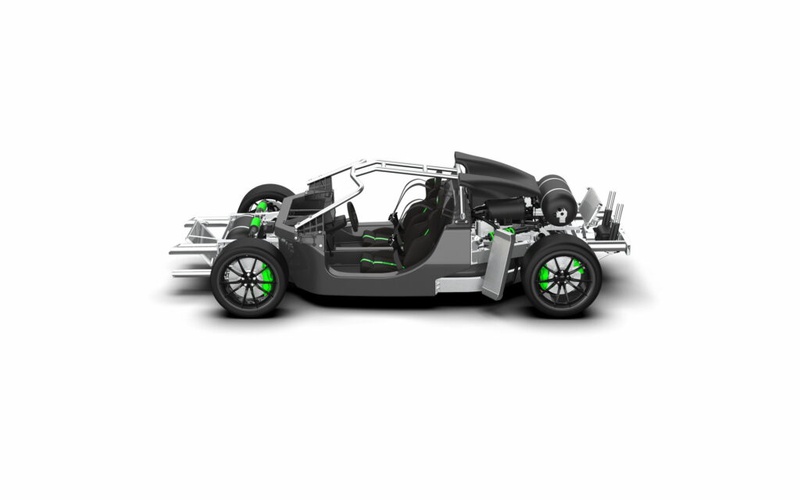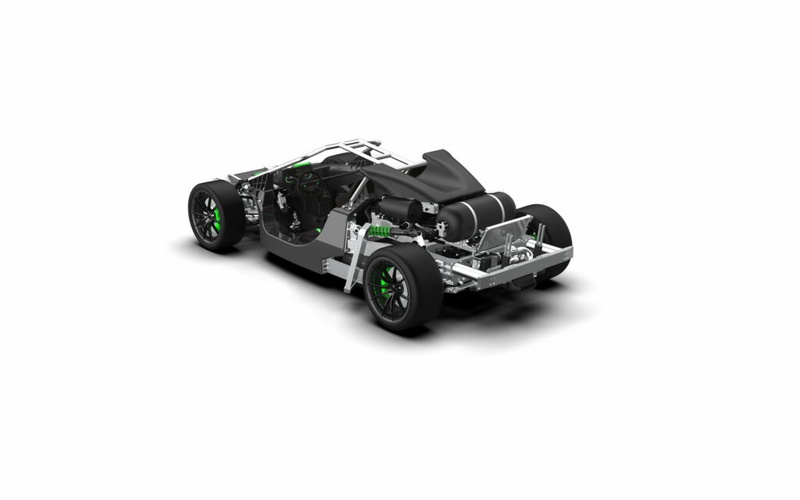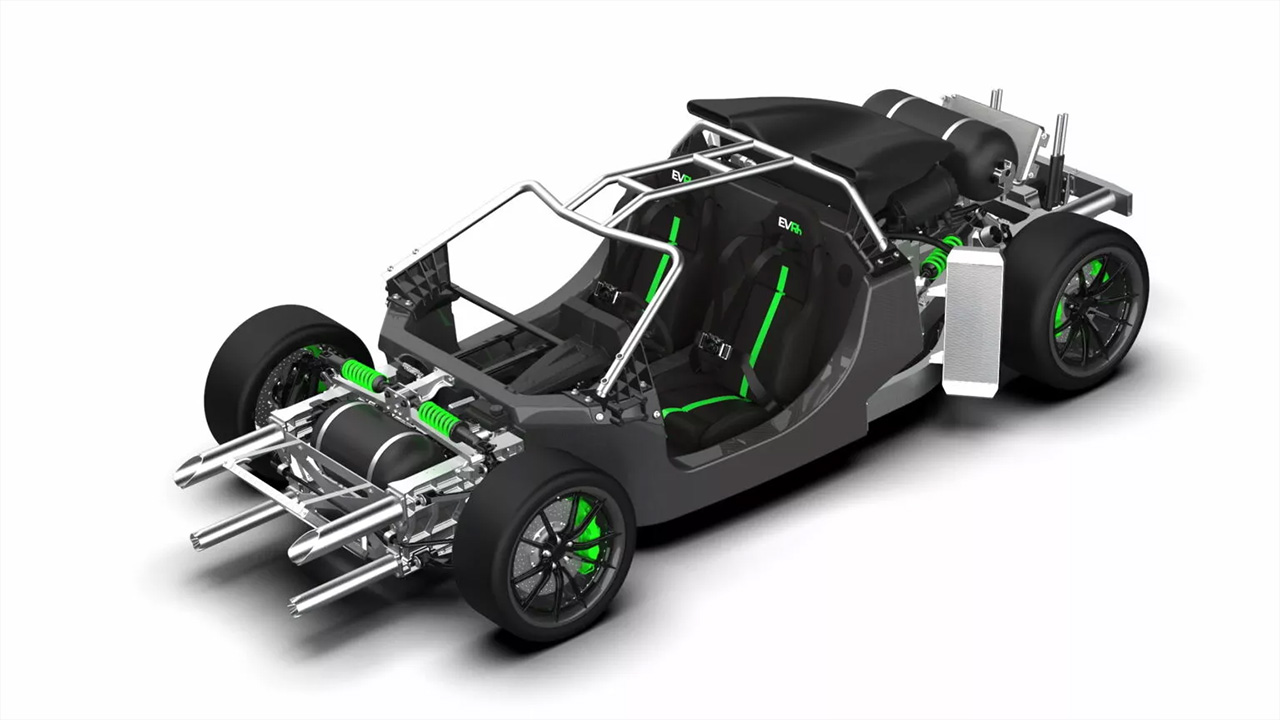The new product is based on the EVR unit, but replaces the large 85 kWh battery with an H2 fuel cell system. It uses the reaction between hydrogen and oxygen to generate the electricity that powers the car. Ready to be utilized by third-party companies, the EVRh platform will be able to make vehicles that reach 100 km/h (62 mph) in less than 2.5 seconds.
The energy is stored in a liquid-cooled FCEV battery pack and sent to a drivetrain capable of delivering 748 hp (550 kW) to the wheels. The fuel tank and battery system are located in the center of the car for optimal weight distribution and provide an estimated 600 km (372 miles) of range.
Thanks to the composite construction of the central tub, WAE Technologies claims that automakers will be able to build a car that weighs less than 1,900 kg (4,189 lbs) and can reach 100 km/h (62 mph) as fast as the upcoming Lamborghini Revuelto.



EVRh’s 120kW hydrogen fuel cell results in a combined total vehicle output of 550 kW
Both AWD and RWD are supported on the platform, and the design of the central tub is intended for hardtop and targa vehicles. No matter how much roof is on the car, WAE says the EVRh platform has been designed to take advantage of active aerodynamics.
Thanks to the lightweight tub, the ability to accommodate numerous engines, and the potential for advanced aerodynamic systems, the manufacturer estimates that vehicles based on the EVRh platform will be able to complete a lap of the Nürburgring in as little as 7:20 - about the same time it took a Ferrari 488 GTB to lap the track in 2016.
Intended for both track-only and road-going vehicles, WAE suggests that the platform is ideal for automakers who want an accelerated path to production with limited development time. In addition, the company says that the similarities between the EVR and EVRh platforms will allow third-party companies to develop both all-electric and hydrogen models side-by-side.
Source: WAE

